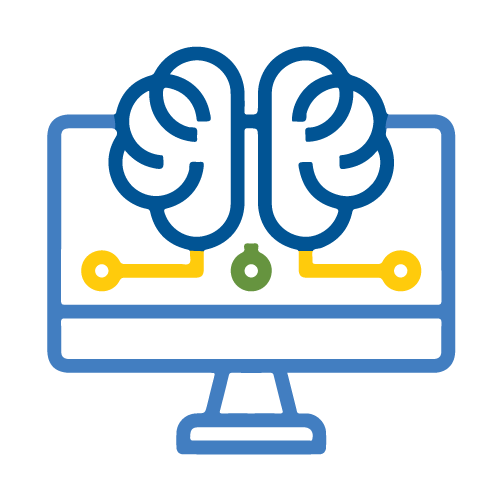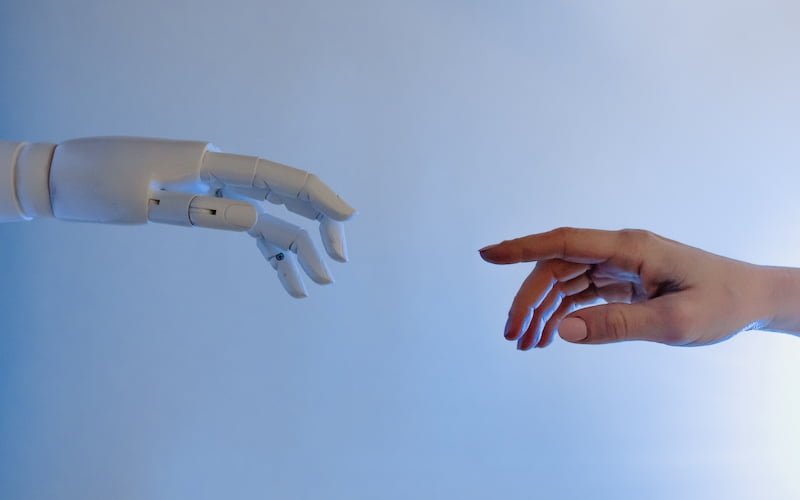Curated by: Sergio A. Martínez
Maybe it’s not exaggerated to say that the future will be driven by machines. With advancements in Artificial Intelligence (AI), machine learning, neural networks, and algorithmically-driven programs; machines can be applied virtually anywhere, from transportation, to design, to even art.

And right now, one of the hottest new trends, at least when it comes to Human Resources and the job market, is the implementation of job interview software that can select, completely neutrally but with 100% accuracy, the best candidate for a given position. Or at least, that’s in theory what is supposed to happen, but what is the reality and ramifications right now? What does a machine do that an HR professional can’t, and what are the limits of these kinds of technologies?
The theory: Machines looking for data
The most common programs for this type of work are called Application Tracking Systems (ATS), which is software that helps businesses manage job applications. These systems automate many of the tasks associated with recruiting, such as posting job ads, screening resumes, and scheduling interviews, and often use machine learning algorithms to help identify the best candidates for a given position.
Many ATS systems also offer features that allow candidates to track their applications and receive updates on the status of their hiring process, normally with minimum human involvement, and they are getting popular by the day in most industries, with software development and technology at the forefront. As explained by Oracle:
“Some organizations lack the reach to connect with top job seekers or to cast a wide enough net in the marketplace. Others are missing critical data on the right channels to find specific candidates; other organizations may lack brand recognition and the means to develop it. An ATS can help address these critical candidate challenges”.
It’s no wonder, then, that these systems are becoming so popular, thanks to the many key advantages they offer over traditional methods of recruiting. For one, machine learning and artificial intelligence can sift through large numbers of applications quickly and efficiently, instead of relying on human recruiters to go through every application, which is both time-consuming and expensive.
Furthermore, these programs can identify patterns and trends in data that might otherwise be difficult to spot by the human eyes, which could help businesses to better understand the kinds of candidates that are most likely to be successful in a given role, as well as identify potential red flags that might indicate that a candidate is not worth pursuing. And more critically, artificial intelligence can help automate repetitive tasks like sending out interview requests or scheduling follow-up calls, freeing time for human recruiters to focus on more strategic tasks, such as developing relationships with potential candidates.
And the cherry on top is that an ATS can help a company ensure that its hiring practices are fair and compliant with equal opportunity laws, ensuring inclusion and openness to all kinds of candidates. So with many issues solved, what are then the challenges that these systems face? And can they completely replace a hiring process done through interviews and human interactions?

The reality: Machines finding (only) data
At a first look, the idea of using IA to select job candidates isn’t far-fetched; after all, the heart of it is just comparing information: the needs of the position vs. the experience and skills of the applicant. Current job application software could theoretically perform this well by using specific data points calibrated to look for particular needs. However…
“Job hunting may be one of the few instances where technology doesn’t improve our lives”, says an article by the Wall Street Journal about the flaws in these tools. “That’s because most companies use Applicant Tracking System software to parse the resumes they receive. This helps recruiters by simplifying the task of assessing resumes. But research indicates that the ATS rejects a startling 75% of resumes because of formatting, insufficient use of relevant keywords, and other criteria that have nothing to do with candidate qualifications.”
The reality is that, while these systems are designed to help employers sift through the hundreds or even thousands of job applications they receive, in practice they often end up weeding out qualified candidates making the job search even more competitive, and with less accurate results for the final candidate. And the problem only grows when we start to rely on IA to drive things like interviews or tests instead of human interaction.
For example, in the podcast “In Machines We Trust” of the MIT Technology Review, the effectiveness of these virtual tools was tested, with some startling results: “One gave our candidate a high score for English proficiency when she spoke only in German”, and “[the] algorithm assessed candidates differently when they used different video backgrounds and accessories, like glasses, during the interview.”.
And that’s without getting into the parameters and limits of these tools, which necessarily reflect the limits and parameters of the people designing and implementing them. As mentioned earlier, the idea for many of these ATS and AI interview software is to help companies find the best possible candidate for a job, but who and how defines what is “perfect”? Or “fair?” To quote the aforementioned MIT Technology Review:
“Instead of scoring our candidate on the content of her answers, the algorithm pulled personality traits from her voice, says Clayton Donnelly, an industrial and organizational psychologist working with [AI-powered interview software] MyInterview. But intonation isn’t a reliable indicator of personality traits, says Fred Oswald, a professor of Industrial-Organizational Psychology at Rice University. “We really can’t use intonation as data for hiring,” he says. “That just doesn’t seem fair or reliable or valid.”

The question, then, is how an organization interprets and analyzes the knowledge and insights offered by this technology. After all, the biases of AI job interview applications can be difficult to spot, but they can significantly impact who gets ultimately hired. For example, if a company’s AI job interview application is trained on purely historical data, it may mistakenly favor candidates who are similar to those who have been successful in the role in the past. This can lead to talented candidates being overlooked simply because they don’t fit the profile of those who have been successful in the role before, and whose needs may have changed since. So to overcome these biases, companies need to be aware of the limitations of their tools, like:
- They’re powered by machine learning, which means they’re not always accurate. Although machine learning is evolving by the day, and results could only get more accurate in the future, right now the flaws of the algorithm, the parameters of the search, and the logic behind these programs could be driving out valuable talent today.
- They often screen out qualified candidates because of resume format issues. If you have ever tried to use a program to scan a PDF, transcribe a conversation, or use an IA to describe an image accurately, you might see how unusual formatting can trip the entire system up.
- They’re designed to save time for recruiters, not applicants. So a system could ask for some very specific and time-consuming requirements from the applicants (like aptitude tests, CV formats with little flexibility, keyword density optimization, photos, etc.) that, while useful for an organization hiring, could discourage a valuable candidate from applying.
- They’re biased against certain groups of people. For example, a study by the New York University’s IA Now Institute discovered that “such systems have historically had trouble understanding women’s voices”, and it goes from there, so relying on them could be counterproductive to the goal of “fair” hiring.

Machines helping humans (and not the other way around)
“These technological tools will keep getting improved and optimized, that’s for sure, but the value of a person involved directly in a process as critical as hiring the perfect candidate cannot be underplayed”, says Helen Matamoros, Human Capital Manager at Scio. “Because, even if the idea of automating these tasks is no longer out of reach, we must not forget that hiring people goes beyond selecting skills and experience; a cultural fit with the organization, the capacity to grow, the disposition to collaborate and teach others, and else are things that an algorithm, as perfect as we can make it, cannot master on its own, and need the criteria and experience of an expert that can take away such information and use it properly”.
That’s why the “Human” portion of “HR” is still a necessity, even in an age of IA and automated software: tools that help perform our jobs better and more effectively, without taking away what makes the system works: understanding from person to person to ensure the best possible choice, which is the approach Scio has when looking for talent to join our organization.
Because beyond merely selecting and onboarding a candidate, the idea of our process is to ensure our vision is shared, both parties (Scio and the candidate) have clear and common expectations about collaborating, and ensuring that any new Scioneer fits right in with the team. These tools might facilitate some of these processes, but at the heart of it, the future is still relying on expertise to make the best possible choices.
The Key Takeaways:
- Hiring a candidate for an open position in an organization is a critical activity that can be time-consuming and expensive.
- New kinds of software and IA-based tools can help with this, but they come with a lot of caveats.
- Relying solely on them to hire someone for a position can have unintended consequences, from discouraging talent to apply, to giving incorrect insights to make a final choice.
- Having people involved in the process is still invaluable because hiring a person goes beyond checking a CV: it has to be a cultural fit, make sense with the team dynamic, and be a fit for both the candidate and the organization, and that can be something outside the scope of a program.
Scio is an established Nearshore software development company based in Mexico that specializes in providing high-quality, cost-effective technologies to help you reach new heights. We have been developing since 2003 and our experience gives us access not only to the knowledge but also the expertise needed when tackling any project. Get started today by contacting us about your project needs – we’ll be happy to help you achieve your business goals.
